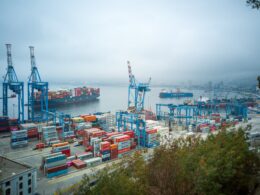Guy Courtin, Infor GT Nexus Commerce Network
Kroger, one of the largest US grocers, recently announced it will be experimenting with driverless vehicles to begin home deliveries. It’s an interesting intersection of two industry trends – driverless cars and online grocery. From the initial reports, it appears that Kroger will be partnering with Bay Area startup, Ocado for the hardware, and begin experimenting at one of its stores this fall. It’s a move that could potentially transform not just grocery delivery, but last mile delivery altogether.
The bugaboo of all retailers today, last-mile delivery is a massive headache for retail, it is inefficient, costly, and creates the potential of massive logistics headaches for urban areas. So, does this project shed some light on what is possible for our supply chains? Yes. Here’s how:
Autonomous delivery will become more prevalent before autonomous cars – many of the headlines about autonomous vehicles revolve around those for people. However, it is the autonomous vehicles that deliver inventory that has a chance to make a bigger impact. We have seen driverless trucks in Nevada, autonomous delivery vehicles in the streets of San Francisco (although these have fallen under greater oversight) and DHL drones in Germany. The news from Kroger is another example of companies experimenting to use these drones to deliver goods, and not transport people. Look for more brands and companies looking to leverage these types of assets to enhance the last mile delivery and more.
Savvy local governments will focus on the infrastructure to enable autonomous delivery – as mentioned above, San Francisco struggled with figuring out what to do with autonomous vehicles cruising around Lombard street. We have already seen that governments struggle with how to deal with this technology – just read the how they are dealing with airborne drones.
Savvy local, regional or national governments will latch on to this opportunity. Start thinking of your infrastructure with these digital assets in mind. Look at cities that have placed an emphasis on green spaces, bike lanes, pedestrian malls etc. They look to leverage these assets to attract visitors, residents and businesses looking for a certain quality of life. Or governments that invest in their airports, ports, railheads etc… Now add autonomous vehicle assets. Dedicated lanes for delivery vehicles to get around a town, locations for lockers and staging stations for the delivery vehicles.
Physical addresses become even less relevant – this is not old news; while we still need a physical address to get our parcels, but we are seeing an increasing number of options for fulfillment. Curb side pick-up, pick up in store, lockers, delivery to your car and even now companies like Dominos delivering to hot spots. So your own physical home address is becoming less relevant, but your GPS location, thanks to your phone, is becoming the most important aspect of last mile. You’re at the beach and forgot your sunscreen? Order some Coppertone and have a drone come deliver it to your GPS location! As more of the last-mile delivery is being taken on by digitally empowered assets, our phones will become the beacon that these delivery vehicles leverage.
Autonomous vehicles will reduce the friction of commerce, coming and going – one of underlying trends we are seeing in retail is the notion of returns becoming a more prominent aspect of the supply chain. One of the issues with returns is the hassle it can create for the consumer as well as the retailer. As we see more autonomous vehicles scurrying around, supply chains will not simply leverage them to deliver but to also accept returns. Possibly even do exchanges. You ordered a size 10.5 pair of Adidas Sambas, but you really needed a 10? An autonomous drone will come to you with that size 10, through verification via on board cameras and microphones you will be able to exchange the goods. These vehicles could even have some that are just mobile vending machines that will literally go where the demand is!
The future is clearly heading towards greater autonomy, increased digitization, and a continual reduction in commerce friction. The Jettsons might not be here tomorrow. Then again, they still drove their own vehicles!













